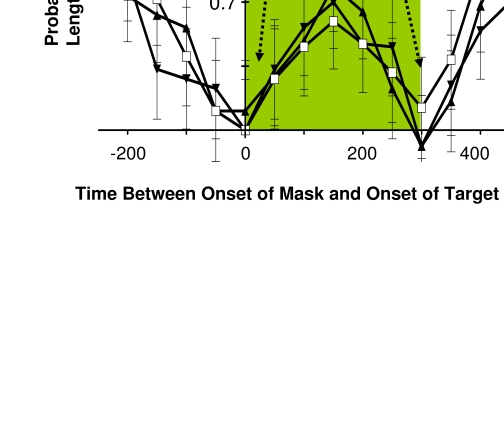Figure 8.
Psychophysical examination of dichoptic versus monoptic masking in humans. Human psychophysical measurements of visual masking when 10 ms duration target and 300 ms duration mask were presented to both eyes together (monoptic masking) and to the two eyes separately (dichoptic masking). The probability of discriminating correctly the length of two targets is diminished, in the average responses from 7 subjects, when targets were presented near the times of mask onset and termination. This is true regardless of whether the target and mask were presented to both eyes (open squares), or if the target was presented to one eye only and the mask was presented to the other (target = left, mask = right: closed upright triangles; target = right, mask = left: closed upside-down triangles). Open squares signify when the target was displayed with both shutters closed, showing that the stimuli were not visible through the shutters. When the mask and the target were presented simultaneously, both eyes’ shutters were necessarily open (dichoptic presentations using shutters are impossible when both stimuli are presented at the same time), and so between times 0-250 ms all four conditions were equivalent. Dichoptic masking is nevertheless evident when the target was presented before the mask’s onset (-250 to -50 ms on the abscissa), as well as when the target was presented after the mask had been terminated (300 ms to 500 ms on the abscissa). Reprinted from Macknik & Martinez-Conde (2004b).

